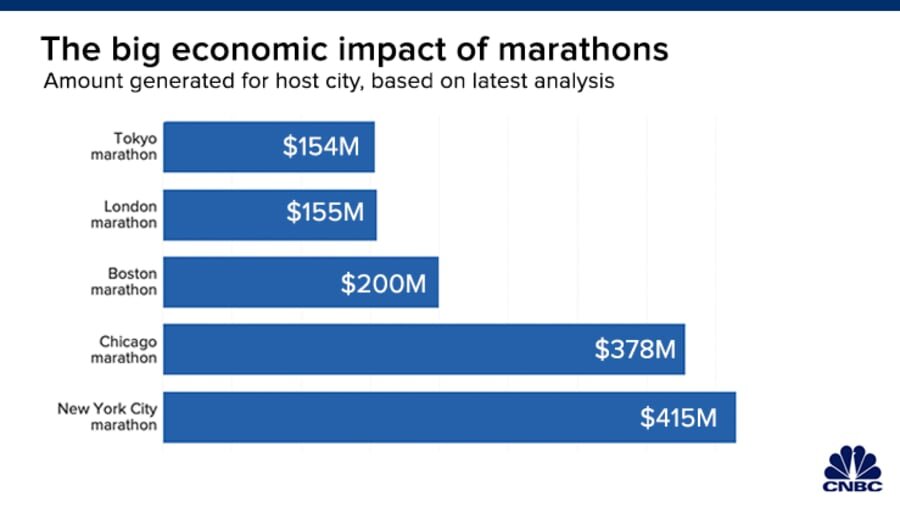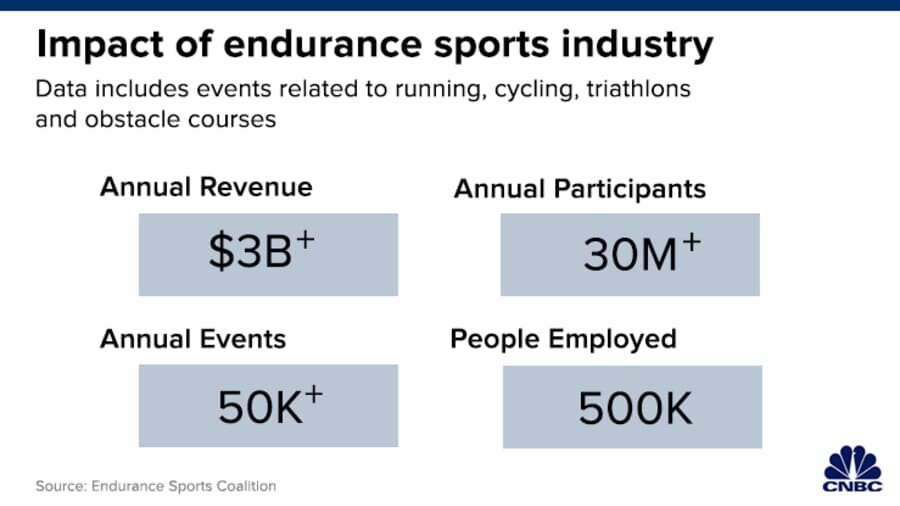
image credit: CNBC
As races are halted and canceled during the pandemic, many local and city municipalities are losing out on millions of dollars from hosting rights. For example, the TCS New York City Marathon brings in $415 million dollars for New York City, and in 2018, charity runners raised a record $40 million. The average runner spends $1,800 per year on running-related items.
Many of the race organizers are small businesses that depend on race registration fees for up to 95% of their revenue. Marathons are relatively inelastic, so if the participation costs go up, participation stays the same. Typical expenses and operating costs include, timing systems, course certifications, bibs, aid station supplies, advertising, paid staff, medical teams, security, t-shirts, and medals.
Given the current pandemic, the future of racing is unclear, but racing companies are looking strategically at increasing health and safety.
Ironman Group CEO, Andrew Messick, said the company is focusing on five key elements:
-
Density reduction
-
Minimizing touchpoints with athletes throughout the race
-
Education and training to make sure people understand best practices
-
Promoting self-reliance, such as having athletes carry their own nutrition
-
Increasing pre-race screening
In April, over 500 endurance event operators across the country launched the Endurance Sports Coalition, which is seeking to secure long-term funding for the industry.

image credit: CNBC